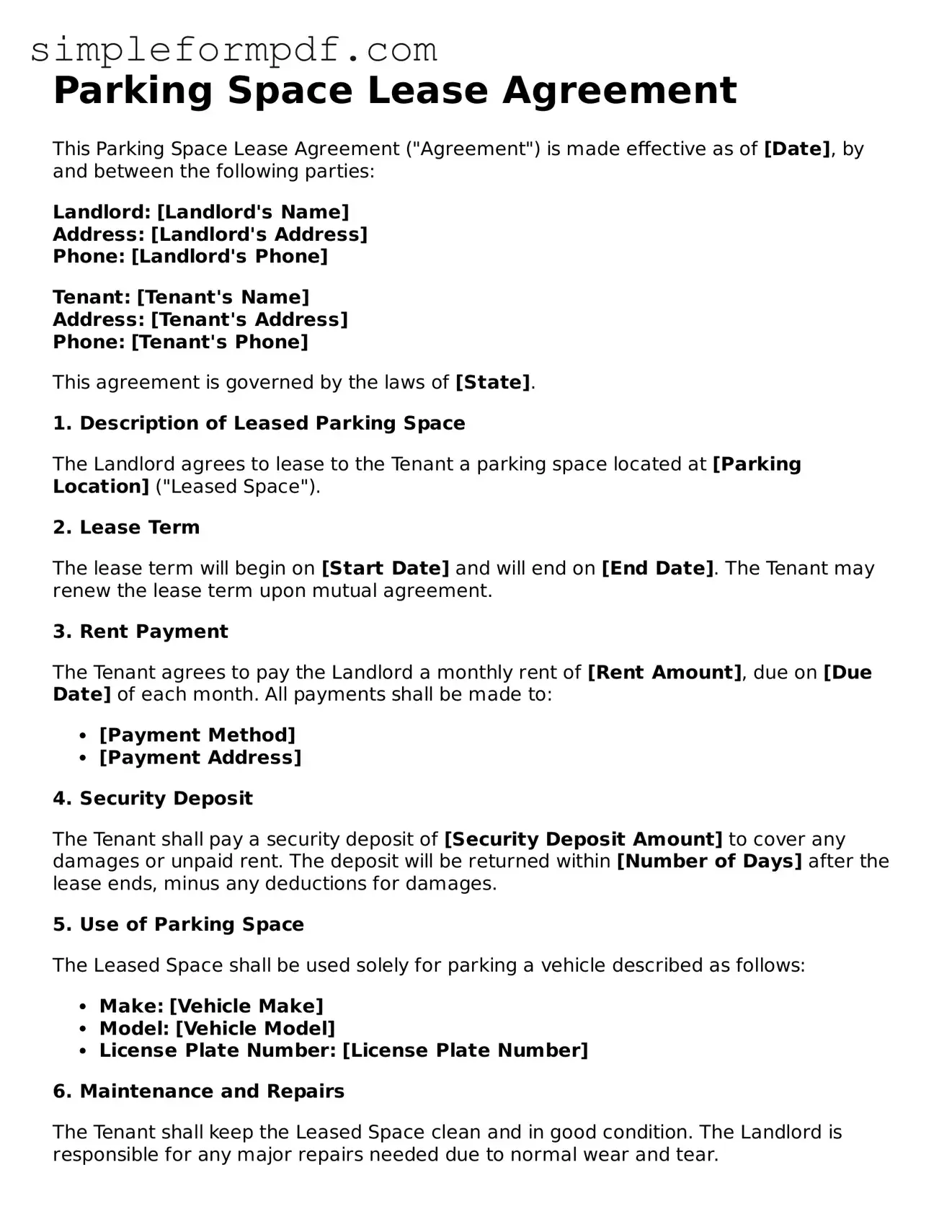Parking Space Lease Agreement
This Parking Space Lease Agreement ("Agreement") is made effective as of [Date], by and between the following parties:
Landlord: [Landlord's Name]
Address: [Landlord's Address]
Phone: [Landlord's Phone]
Tenant: [Tenant's Name]
Address: [Tenant's Address]
Phone: [Tenant's Phone]
This agreement is governed by the laws of [State].
1. Description of Leased Parking Space
The Landlord agrees to lease to the Tenant a parking space located at [Parking Location] ("Leased Space").
2. Lease Term
The lease term will begin on [Start Date] and will end on [End Date]. The Tenant may renew the lease term upon mutual agreement.
3. Rent Payment
The Tenant agrees to pay the Landlord a monthly rent of [Rent Amount], due on [Due Date] of each month. All payments shall be made to:
- [Payment Method]
- [Payment Address]
4. Security Deposit
The Tenant shall pay a security deposit of [Security Deposit Amount] to cover any damages or unpaid rent. The deposit will be returned within [Number of Days] after the lease ends, minus any deductions for damages.
5. Use of Parking Space
The Leased Space shall be used solely for parking a vehicle described as follows:
- Make: [Vehicle Make]
- Model: [Vehicle Model]
- License Plate Number: [License Plate Number]
6. Maintenance and Repairs
The Tenant shall keep the Leased Space clean and in good condition. The Landlord is responsible for any major repairs needed due to normal wear and tear.
7. Termination
Either party may terminate this Agreement with [Notice Period] written notice to the other party. The notice must be delivered in person or sent via certified mail.
8. Governing Law
This Agreement shall be governed by the laws of [State], without regard to its conflict of laws principles.
9. Signatures
By signing below, both parties acknowledge that they understand and agree to the terms contained in this Agreement.
_____________________________
Landlord Signature
Date: ______________________
_____________________________
Tenant Signature
Date: ______________________
